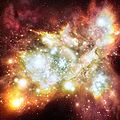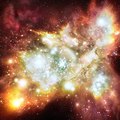Rikcha:2003-32-GravitationalLens.jpg
Tema

Kay ñawpaq qhawariypa chhikan kaynin: 600 × 600 iñu. Huk huyakukuna: 240 × 240 iñu | 480 × 480 iñu | 768 × 768 iñu | 1024 × 1024 iñu | 2048 × 2048 iñu | 3006 × 3006 iñu.
Qallariy willañiqi (3006 × 3006 iñu; willañiqip chhikan kaynin: 1,48 MB; MIME laya: image/jpeg)
Willañiqip wiñay kawsaynin
P'unchaw/pacha nisqapi ñit'iy chaypacha willañiqi kachkasqata qhawanaykipaq.
| P'unchaw/Pacha | Uchuylla rikchacha | Chhikanyachikuqkuna | Ruraq | Willapuy | |
|---|---|---|---|---|---|
| kunan | 15:20 11 mar 2006 |  | 3006 × 3006 (1,48 MB) | Angeloleithold | {{PD-USGov-NASA}} |
Maypim willañiqita llamk'achinku
Kay rikchamanqa manam ima p'anqakunachu t'inkimun.
Mayqin wikikunapi willañiqita llamk'achinku
Kay wakin wikikunam willañiqitaqa llamk'achinku:
- cy.wikipedia.org-pi kaykunapi llamk'achinku
- de.wikipedia.org-pi kaykunapi llamk'achinku
- en.wikipedia.org-pi kaykunapi llamk'achinku
- en.wikiquote.org-pi kaykunapi llamk'achinku
- en.wiktionary.org-pi kaykunapi llamk'achinku
- es.wikipedia.org-pi kaykunapi llamk'achinku
- Usuario:Benedicto
- Usuario:Compermisos
- Usuaria:Eleniel
- Usuario:Eriol~eswiki
- Usuario:Lironcareto
- Usuario:Misantropo~eswiki
- Usuario:Humanware
- Usuario:Catibel
- Usuario:Tomassino
- Usuario:Jeanpal01
- Usuario:Fer31416
- Usuario:Smrolando
- Usuario:ZarQuiNo
- Usuario:JAGT
- Usuario:Phranciscusmagnus
- Usuario:Mauricio-B
- Usuario:Userbox/Usuario astronomía
- Usuario:Naturagirl
- Usuario:Seneca
- Usuario:Safadit
- Usuario:Reportero~eswiki
- Usuario:TheONEMaTT
- Usuario:Alberto.naranjo
- Usuario:JoNaLo
- Usuario:Fmercury1980
- Usuario:Jdelmen
- Usuario:Jgomez53
- Usuario:Drake 81
- Usuario:LímitesdelValle
- Usuario:Elespia
- Usuario:Reginocova
- Usuario:OrionNebula
- Usuario:Armenteros
- Usuario:Userbox/Intereses
- Usuario:Kamui99
- Usuario:Tuxkhan
- Usuario:Atardecere
Qhaway mayqin wikikunapim willañiqita llamk'achinku.



